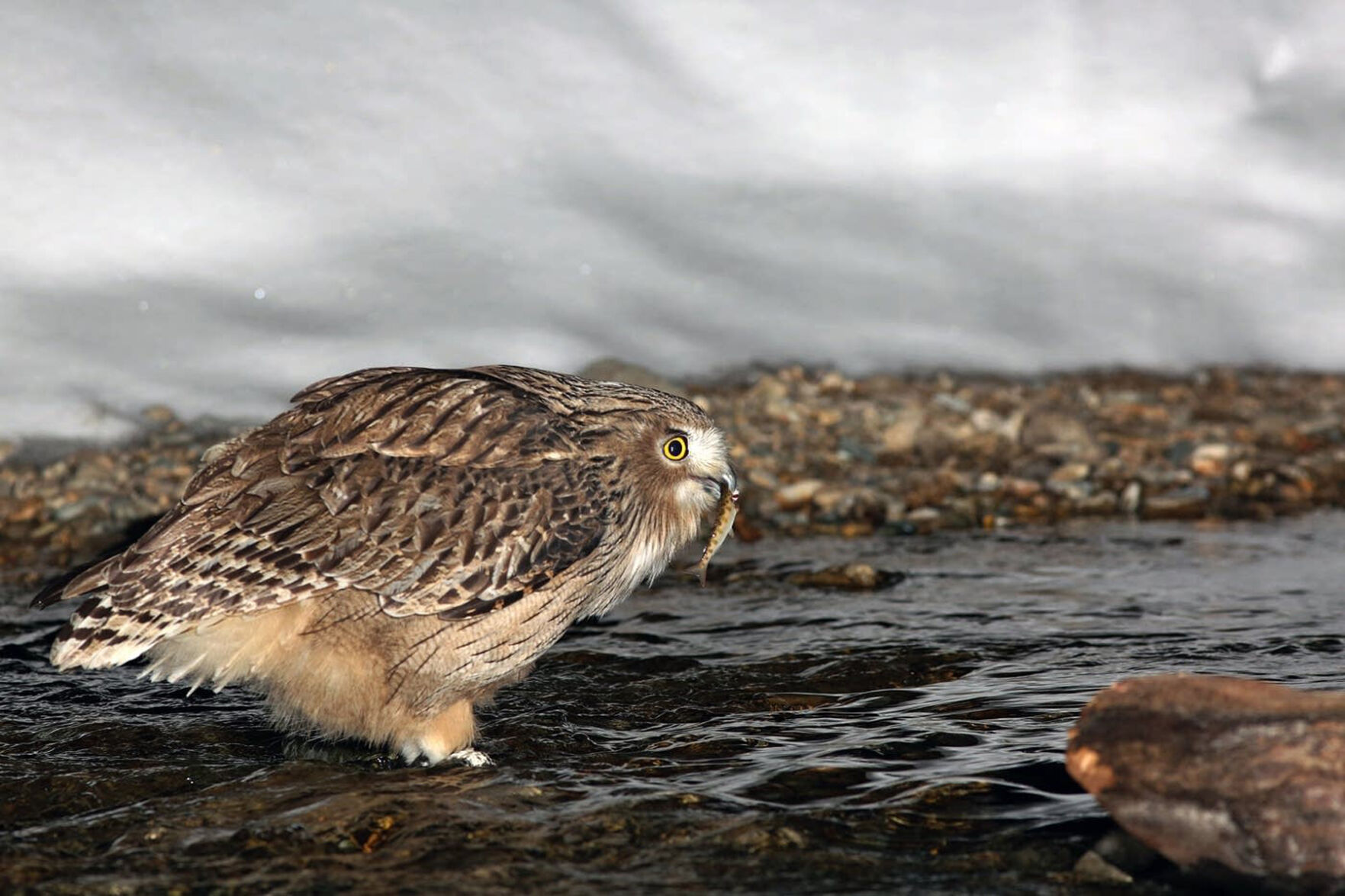


Another fact that the reader about these fascinating birds is that fish owl pairs “vocalize in duets,” that the male of the pair usually initiates the duet, the female joining in, the two “so synchronized that many people, hearing a fish owl pair vocalize, assume it is one bird” (pairs vocalizing in duets is “recognized in less than 4 percent of bird species globally”). As a result, fish owls lack the well-defined facial disks that so many other owl species have (a facial disk, a distinctive feature of many owl species, is “the characteristic, round feather pattern on an owl’s face that channels the faintest sounds to its ear holes”). For instance, unlike other owls, which rely on sound to find their prey, fish owls use their eyesight to find fish moving beneath the surface of the creeks and rivers that they live along. The fish owls are definitely the star of the book and the reader learns a good bit about them, more and more in the narrative as the author discover more and more about these interesting animals. The book can be read as a work specifically about the owl species itself, about the natural habitat it exists in and the species it shares that habitat with (which includes tigers), as a travel book about life in the Russian far eastern province of Primorye (“a coastal talon of land hooking south into the belly of Northeast Asia,” which would be familiar to anyone who read John Valliant’s excellent book _The Tiger_), and about the life of a field biologist doing research in difficult conditions (the author spent twenty months out of the field, primarily in the winter, spread out over five years).


Slaght about his work researching the world’s largest owl, Blakiston’s fish owl, as part of his Ph.D. A very nicely written book by author Jonathan C.


 0 kommentar(er)
0 kommentar(er)
